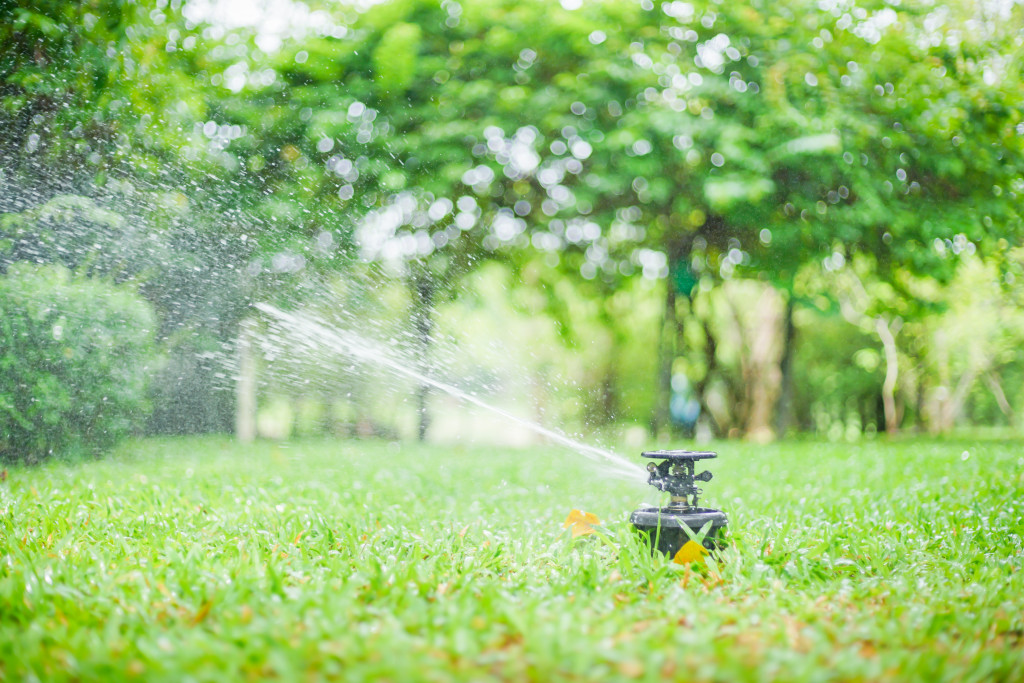Having your own garden is one of the best parts of having an expansive landscape. Homeowners are willing to invest in their garden aesthetics by buying garden supplies, decorations, and other things that contribute to a stunning green space. Those who want extra protection and added appeal for their garden turn to reputable sources such as GreatFence com to get the best fence design for their home garden.
Sadly, growing your own green space isn’t easy as it sounds. Anyone who lives in a tropical climate understands how difficult it is to grow a garden. According to the U.S. Drought Monitor, 75% of the western U.S. is facing severe heatwaves and intense drought. The idea of growing a garden becomes impossible, especially if you want to reduce water usage and cut down utility bills.
Despite living in areas with sustained droughts, passionate gardeners are working hard to have lush landscaping. But having a garden in drought-afflicted areas can be expensive if you don’t know how to build the right landscape for a dry climate. This is where xeriscape comes in, a smart gardening approach designed for dry regions that aim to reduce water usage.
If you’re living in areas with dry climates, this guide will educate you on how you can build your own garden in places with a limited water source.
What is xeriscaping?
Xeriscaping started in Colorado during the 1980s, a joint initiative led by the Denver water department and non-profit groups to spread the word about water-conscious landscaping. From there, it has become a popular trend among landscapers and gardeners, particularly in the western U.S., where prolonged droughts have made water an expensive and limited resource. Denver, Colorado became the first area to support xeriscaping by encouraging its citizens to conserve the city’s water for their gardens and lawns.
The term xeriscaping was derived from the Greek word zeros, meaning “dry”, combined with the suffix -scape, from the term “landscape”. Xeriscape landscaping or “xeriscaping” is a form of landscaping designed for areas that experience frequent droughts, or for properties with limited water sources. It also refers to the practice of creating landscapes to minimize or eliminate the need for irrigation.
The main principle of xeriscaping is to create beautiful gardens or landscaping while using lesser water resources as possible. Many people confuse the word xeriscape with zero-scape. The reason is that xeriscaped gardens share similar qualities to minimalist landscapes, but this depends on the landscaper or homeowner. The main principle of xeriscaping is to create beautiful gardens or landscaping while using fewer water resources as possible. Xeriscape landscape is anywhere from Mediterranean gardens to dry, desert areas.

Benefits of xeriscaping
With the increasing environmental awareness, people are becoming more eco-conscious. People in dry regions have shifted their interests toward xeriscaping by carving green spaces in their homes. In turn, xeriscaping allows gardeners to plant native plants while experiencing a variety of eco-friendly benefits.
Xeriscaping involves the planting of native, drought-tolerant plant species, such as daffodils, ocotillo, and myrtles. Those who have tried this reported that they reduce water usage by 50 to 75 percent, helping them conserve water and save money. In California, residents are qualified to receive conservation incentives (water bill reduction) by converting their lawns to xeriscaped gardens. This allowed them to save over 120 water gallons each day, according to the water department.
Another main benefit of xeriscaping is its low maintenance cost. Dry-climate plants are cheap and easy to maintain because of their low water requirements.
Most people are hesitant to try xeriscaping because they think it’s all about planting succulents and non-flowering plants. In fact, you can grow a lot of xeriscape-friendly plants that look green and leafy, such as lavender, jacarandas, saguaros, century plants, olive trees, sunburst honey locust, red bird of paradise, and other colorful choices.
How to start xeriscaping
Xeriscaping is actually easy as long as you know how to choose the right plants, maintain good soil, and plan water use. One of the main principles of xeriscaping is the proper amending of soil and compost. When done correctly, you can improve the moisture-retention ability of the garden soil.
Embracing xeriscaping would mean ditching your grassy lawn and non-native plants. Instead, you focus on planting native plants that don’t require tons of water. Knowing how to water efficiently is also an important practice in xeriscaping, where you have to create a plan to ensure correct water usage. Although dry-climate plants rely on limited water, they may still need a little water maintenance.
Xeriscaping offers a great way to have a stunning garden while saving money and protecting the environment. Today, living in a drought-afflicted area is no longer a reason not to try gardening. There are plenty of ways to grow a variety of attractive plants even with limited water. To ensure a successful xeriscape project, make sure to observe regular maintenance to enjoy its many benefits.







